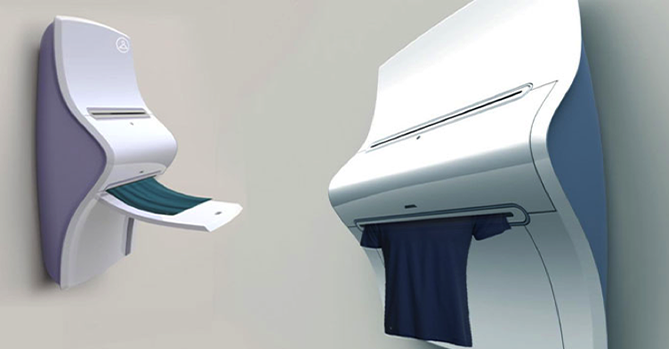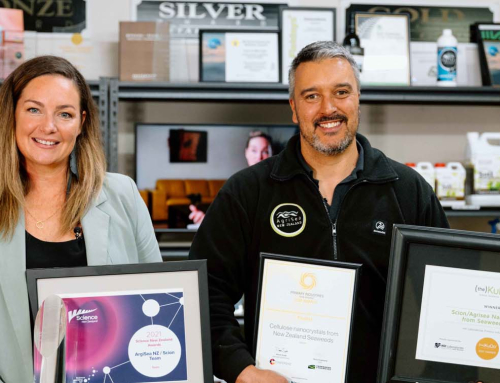Peter Diamandis
In 2010, Kevin Rustagi was frustrated. So were his friends Aman Advano, Kit Hickey, and Gihan Amarasiriwardena.
These four recent MIT grads had been thrust into the working world, where they quickly discovered they hated their outfits. Business clothes sucked. And it didn’t make sense—athletes got to perform in all sorts of high-tech gear, but accountants had to make do with Dockers?
So they decided to bring a little whiz-bang to the boardroom. Together, they formed the Ministry of Supply, a clothing company intent on borrowing space suit technology from NASA for a line of dress shirts.
In 2011, with an original fundraising goal of $30,000, a runaway Kickstarter campaign netted them almost half-a-million. They were in business.
Soon afterward, the “Apollo” dress shirt hit the market. Looking like a traditional button down, the Apollo is anything but. The shirt uses “phase change materials” to control body heat and reduce perspiration and odour. It also adapts to the wearer’s shape, and stays tucked in and wrinkle-free all day. As TechCrunch summarised: “In essence, it’s a magic shirt.”
That magic shirt led to magic pants, suits, and more. Ministry of Supply now makes high-performance smart clothing for both sexes, including a new line of intelligent jackets that respond to voice commands and learn to automatically heat to your desired temperature.
And recently, they extended their high-tech approach to manufacturing.
In their Boston-based retail outlet on fashionable Newbury Street, you can have your high-performance shirt (or suit, blouse, and pants) 3D printed in about 90 minutes. As online sales have become more popular during the pandemic, you can also order 3D-printed knit masks right to your doorstep.
And the machine itself is a marvel. With 4,000 individual needles and a dozen different yarns, the printer can create any combination of materials and colours desired, with zero waste.
Thanks to the smartphone, 3D-printed clothing can now be ordered from the ease of your living room.
Since fashion designer Danit Peleg’s 2015 introduction of the first line of 3D-printed clothing available via the web, a half-dozen designers have followed suit.
Both Adidas and New Balance deploy the technology: the former incorporating user data to design the optimal midsole, and the latter to build custom insoles for athletes.
Other fashion houses are not far behind.
3D Printing Across All Retail Sectors
But fashion is only part of the story, as 3D printing is now showing up all over retail.
Companies like Shapeways allow customers to design products in categories ranging from drones and eyewear, to jewellery and medical devices. Simply upload a 3D model to their website and receive the product at your home days later.
And the technology continues to improve. AIMS, a project recently launched via Kickstarter, has released a 3D printer with AI integration to monitor and alert you of print errors in real-time.
This is only where we are today. Over the next 10 years, 3D printing will reshape retail in four key ways:
- The End of the Supply Chain: With 3D printing, retailers can now purchase raw materials and print inventory themselves, either at warehouses or in the retail outlet. This means the end of suppliers, manufacturers, and distributors.
- The End of Waste: Okay, maybe not the complete end of waste, but as consumers increasingly prefer eco-friendly products and retailers look to minimise materials cost, the exactitude of 3D printing is a ready-made solution.
- The End of the Spare Parts Market: If you’re a farmer in Iowa and your tractor breaks during harvest time, waiting a few days for a spare part could jeopardise the entire season. A 3D printer solves this problem. And it’ll solve the same problem for everything from coffee makers to skateboard wheels. This doesn’t just mean an end to the spare parts business, it also means a new level of longevity for the products we purchase.
- The Rise of User-Designed Products: Sure, there will always be some version of Apple in the market—an uber design-centric company pushing out products so slick they always find a buyer. Yet, for everything from fashion to furniture, ‘customer-designed’ will replace ‘designer-designed’ as the new standard.
Final Thoughts
Within the next decade, we’ll see Alexa placing our orders, 3D printers manufacturing those orders, and drones delivering the results to our doorsteps. Only the retail experiences involving virtual try-on mirrors, personalised shopping assistants, and novel technologies will survive.
Prepare for a future in which the retail supply chain is simplified and localised, with on-the-spot 3D printing that can meet any demand.
We must start thinking now about the next challenge: in a future that requires more individual shipments, how can we create emissions-free transportation vehicles and recyclable packaging that actually makes it to the recycling plant?






